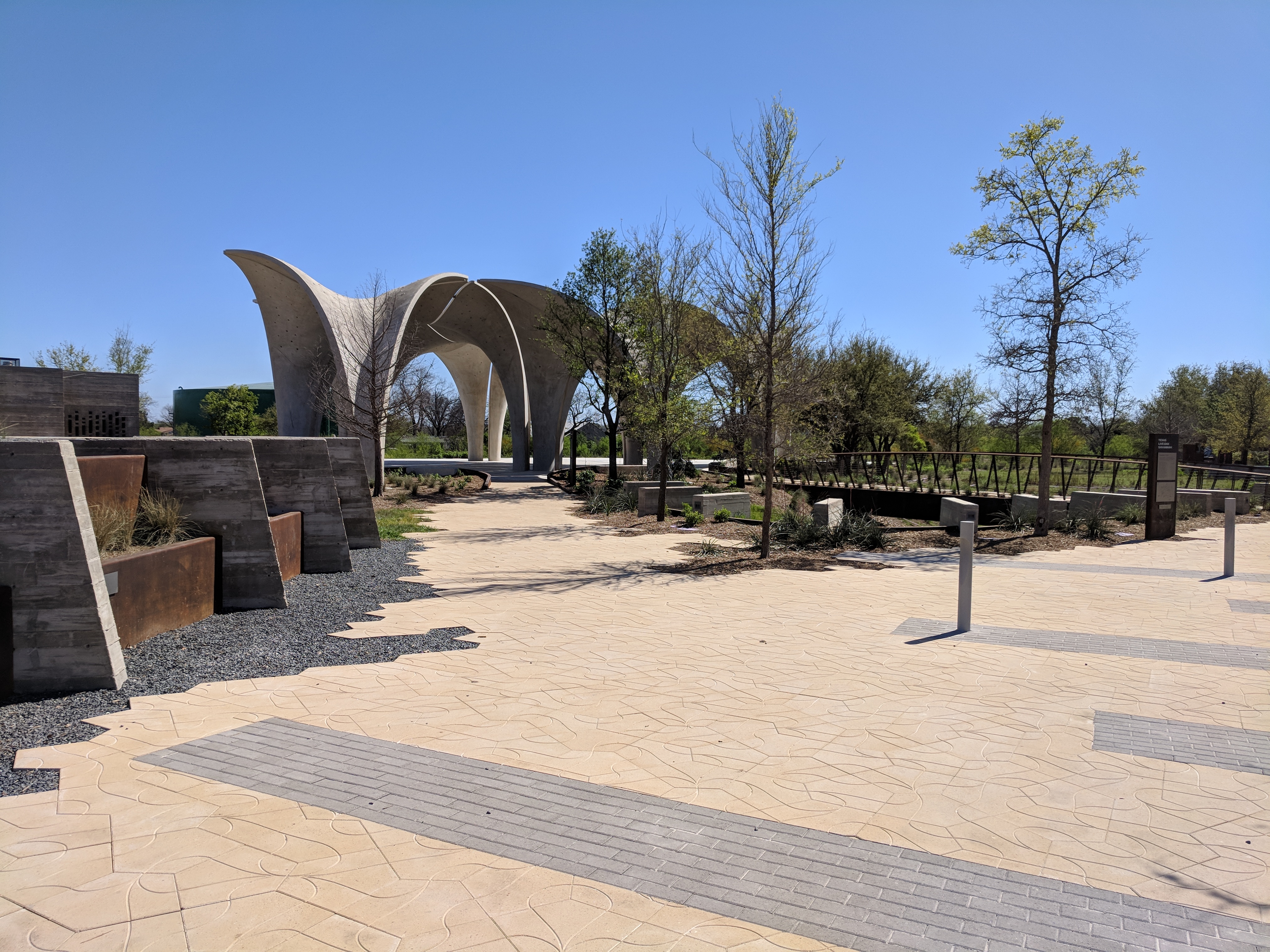
Permeable Pavements
Stormwater
Combined Sewer Overflows
Permeable surfaces, unlike impermeable surfaces such as asphalt or concrete, allow stormwater to infiltrate through porous surfaces into the soil and groundwater. There are several layers to permeable pavements: the pervious material which sits on the bedding layer, the reservoir layer which usually has some sort of drainage pipe underneath the bedding and finally the filter layer at the bottom. There doesn't necessary have to be a drain. There are three major permeable pavement types: Porous Concrete, Pourous Asphalt, Interlocking Pavers. Which permeable pavement type is determined by site-specific design factors and intended future use of the surface. The pavement types vary on the following: scale of application, pavement thickness, bedding layer, reservoir layer, construction properties, design permeability, construction cost, Min. batch size, longevity, overflow, temperature reduction, colors/textures, traffic bearing capacity, surface clogging etc. The table comparing these design factors between the three pavement types can be found on page 14.04-3 of this document https://www.rwra.org/wp-content/uploads/2011/09/Stormwater-Fact-Sheets-Minimum-Standards.pdf
May require costly maintenance if pavement becomes clogged with sediment and no longer allows infiltration. Required maintenance, especially for porous concrete and asphalt paving includes vacuum sweeping to remove deposited sediment as well as washing with a high-pressure hose to remove clogs in the surface of the pavement. The maintenance is recommended twice a year, in the spring after the last now events and after the autumn leaf fall. For driveways and walkways a pressure washer can just eb used. An annual dry weather sweeping - vacuum sweeper that does not use water spray because that could clog the subsurface. Do an annual inspection that looks for clogging, structural integrity etc
Pavement surface must allow water to infiltrate to a permeable infiltration medium below. An underdrain system may be required where soils beneath paving system do not allow adequate infiltration (more than two inches per hour). Slopes should be less than 5-10% to allow infiltration rather than runoff. Integration with other BMPs improves the effectiveness of pervious pavement. For example, placing a vegetated filter strip around the pervious pavement will reduce sediment transport to the project area, reducing the amount of maintenance required. Soil conditions do not constrain the use of permeable pavement but the type of soil does determine if an underdrain is needed. If there is a freeze-thaw cycle it needs to be taken into consideration during the design phase
Moderate – may be 2-3 times more expensive than conventional pavement.
Reduces runoff volumes. Reduces impervious surface area. Depending on pavement system, may provide pollutant filtering.